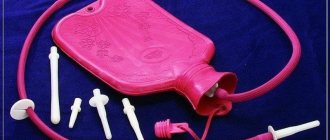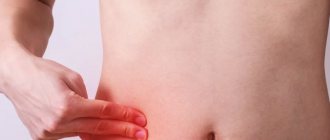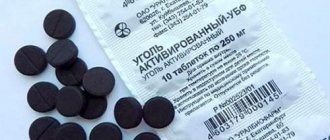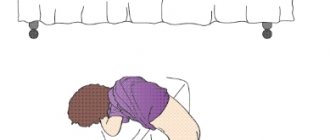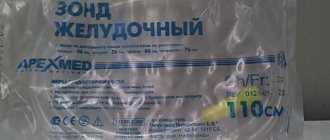home
/
Articles
/
Siphon enema
A siphon enema is one of the simplest, most accessible and effective ways to rid the intestines of gases, feces and stones. It is actively used both in hospital settings and at home without the involvement of specialized specialists. Typically, it is performed in a medical facility under the supervision of an experienced healthcare professional. It is a cleansing procedure. The main feature is the repeated introduction of a number of portions of liquid into the intestine, which, upon leaving the intestine, washes out all deposits from it. Flushing is carried out until the water poured inside is as clear at the exit as it was at the entrance.
Contraindications
There aren't that many of them. Giving an enema is prohibited if the following are reliably diagnosed:
- Bleeding, inflammation, chronic spastic phenomena, accompanied by ulcers or erosions of the mucous membranes in the intestines
- Neoplasms in the intestines, especially when it comes to malignant tumors
- Postoperative period after surgery
- Intestinal prolapse, perforation or thrombosis
- Fissures in the anus, bleeding hemorrhoids, vascular embolism
A large volume of fluid entering the intestines unnaturally, in the presence of the above-described contraindications during the procedure, can aggravate the course of the disease and worsen the patient’s condition.
Siphon enema as a procedure
To perform an enema, the following conditions are required:
- Compliance with sanitary and hygienic rules must be at their best. The attitude of the medical staff is responsible and serious.
- If the patient agrees, it is mandatory to inform about the upcoming procedure in a tactful manner. Not formally, but from the right psychological position. Explain the technique and sequence. An important step that cannot be skipped.
- Compliance of the medical personnel themselves with the requirements for the procedure.
- Examination of the patient by a doctor, determination of the absence of contraindications, permission to perform the procedure. Recommendations.
- Availability of the required enema equipment.
- Additional equipment required for washing: napkins, buckets, oilcloths, etc.
You should do the rinsing carefully, carefully, so as not to damage the intestinal walls. This is the main reason why a skilled worker is required nearby. It's difficult to install on your own.
Preparation for the procedure
To perform a siphon enema you will need the following set of accessories:
- Funnel. A regular food product with a wide neck is suitable.
- Hose. You need to take a fairly thick silicone or rubber tube (1-1.5 m long)
- Hard couch. Alternatively, any other flat surface can be used
- Related products. This includes latex gloves, oilcloth for the couch, a sheet, containers for clean and dirty water (a large bowl, bucket or large basin will do), a ladle or a large mug for pouring liquid into a funnel
You also need to stock up on petroleum jelly, a disinfectant solution and a sufficient volume of clean boiled water (about 10-12 liters), the temperature of which will be between 36-38 degrees Celsius. The person performing the procedure should wear a long-sleeved robe and an apron made of waterproof material.
MANIPULATION No. 114 “TECHNIQUE FOR ASIPHON ENEMA”
Goal : thorough bowel cleansing, intestinal dialysis.
Indications: no effect or cleansing enema; poisoning with certain poisons; preparation for intestinal surgery; excessive processes of fermentation and putrefaction in the intestines; pronounced flatulence.
Contraindications: the same as for a cleansing enema.
Equipment : thick probe: two thick rubber tubes with a diameter of 1.5 cm, connected by a glass tube; 1 liter funnel, bucket for rinsing water, 10-12 liters of boiled water at room temperature, jug, oilcloth, diaper, petroleum jelly, tray, sterile: spatula, gauze napkins; rubber apron, rubber gloves, screen, containers with disinfectant.
Sequencing:
1. Familiarize the patient with the sequence of the procedure.
2. Wash your hands, put on gloves and a rubber apron.
3. Separate the patient with a screen if the procedure is performed in the ward.
4. Place the patient on his left side on a couch covered with oilcloth and a diaper, ask him to bend his legs and bring his knees to his stomach.
5. Using a spatula and a napkin, lubricate the blind end of the probe with Vaseline over a length of 30-40 cm.
6. Using the thumb and index finger of your left hand, spread the patient’s buttocks; with your right hand, using light rotational movements, carefully insert the blind end of the probe into the intestine to a depth of 30-40 cm.
7. Attach a funnel to the free end of the probe.
8. Fill the funnel with water, holding it at the level of the couch in a slightly inclined position.
9. Raise the funnel with water 1 m above the level of the couch, make sure that the water goes into the intestines from the funnel only to its mouth.
10. Lower the funnel below the patient's level, holding it at an angle and pouring the contents into the rinsing bucket.
11. Repeating the last procedure, rinse the intestines until clean wash water is obtained.
12. Disconnect the funnel, lower the free end of the probe into the basin or
bucket for 10 minutes to remove remaining water and gases from the intestines.
13. Carefully remove the probe from the intestine using a napkin.
14. Place the napkin, probe, and funnel in the waste material tray.
15. Disinfect care items
16. Remove gloves, place in a container with disinfectant, and wash your hands.
MANIPULATION No. 115
“TECHNIQUES FOR PRODUCING RELAXING ENEMAS:
Goal : thorough bowel cleansing, intestinal dialysis.
Indications: no effect or cleansing enema; poisoning with certain poisons; preparation for intestinal surgery; excessive processes of fermentation and putrefaction in the intestines; pronounced flatulence.
Contraindications: the same as for a cleansing enema.
Equipment : thick probe: two thick rubber tubes with a diameter of 1.5 cm, connected by a glass tube; 1 liter funnel, bucket for rinsing water, 10-12 liters of boiled water at room temperature, jug, oilcloth, diaper, petroleum jelly, tray, sterile: spatula, gauze napkins; rubber apron, rubber gloves, screen, containers with disinfectant.
Sequencing:
1. Familiarize the patient with the sequence of the procedure.
2. Wash your hands, put on gloves and a rubber apron.
3. Separate the patient with a screen if the procedure is performed in the ward.
4. Place the patient on his left side on a couch covered with oilcloth and a diaper, ask him to bend his legs and bring his knees to his stomach.
5. Using a spatula and a napkin, lubricate the blind end of the probe with Vaseline over a length of 30-40 cm.
6. Using the thumb and index finger of your left hand, spread the patient’s buttocks; with your right hand, using light rotational movements, carefully insert the blind end of the probe into the intestine to a depth of 30-40 cm.
7. Attach a funnel to the free end of the probe.
8. Fill the funnel with water, holding it at the level of the couch in a slightly inclined position.
9. Raise the funnel with water 1 m above the level of the couch, make sure that the water goes into the intestines from the funnel only to its mouth.
10. Lower the funnel below the patient's level, holding it at an angle and pouring the contents into the rinsing bucket.
11. Repeating the last procedure, rinse the intestines until clean wash water is obtained.
12. Disconnect the funnel, lower the free end of the probe into the basin or
bucket for 10 minutes to remove remaining water and gases from the intestines.
13. Carefully remove the probe from the intestine using a napkin.
14. Place the napkin, probe, and funnel in the waste material tray.
15. Disinfect care items
16. Remove gloves, place in a container with disinfectant, and wash your hands.
MANIPULATION No. 115
“TECHNIQUES FOR PRODUCING RELAXING ENEMAS:
Execution technique
The experience gained over the years in administering an enema is described - the technique of implementation. He is unchangeable. You will have to act according to the instructions, observing safety precautions and sanitary and hygienic requirements.
Preparation before the procedure
Preparatory activities are necessary. The procedure is not pleasant; you should approach the preparation of the patient as professionally as possible. To prepare psychologically, you need to explain in a calm tone what will happen step by step. Preferably without unnecessary terminology.
The patient is recommended to eat “light” food 1-2 days before the cleansing procedure so that the process of removing toxins goes faster. It is advised to include fermented milk, juices, steamed cereals, salads, fruits, and vegetables in your diet. This will help you survive the intestinal lavage easier. If possible, it is better to spend the entire day after the enema calmly and quietly, without unnecessary movements. Get away from stress.
Preparation of procedural supplies:
- A couch with a flat, hard surface. An oilcloth on top that absorbs moisture is required.
- Catheter longer than average, container for filling with warm water.
- Bucket, basin for removing intestinal contents.
- Lubricant for the insertion tube.
- Napkins.
- Robe, gloves, apron.
- Disinfection solution.
- Rubber tube 1-1.5 meters long.
Separately, it is worth noting the volume of water for the procedure, required and prepared in advance. There is no precisely established amount; it all depends on the degree of contamination and slagging of the intestinal tract. Sometimes two liters of 3-4 rinses are used, in other cases 8 or more may be required.
Additional nuance: water temperature. For a siphon enema you need hot water, the temperature is 40 degrees. For comparison: medicinal and cleansing are done with warm water at room temperature. The described condition must be met. The reason for the specified temperature indicator: if the water is cold, it will lead to cooling of the organs, if it is too hot, it will burn. The procedure takes longer than usual.
Instead of water, a solution with potassium permanganate or a solution of sodium bicarbonate 2% can be used.
It is possible to give an enema to children.
Technique:
- The selected surface (for example, a couch) is covered with waterproof material.
- The patient should be placed on his left side.
- A pre-lubricated tip is inserted inside. An important point: you need to carefully insert the tube, respecting the bends of the intestinal tract, to a depth of 40 cm.
- The bowl (funnel) is placed at a height of 1 meter above the body, filled with warm water, which flows inside through a long tube. When the intestinal volume is filled with liquid, the bowl of water is now lowered in the opposite direction, down a meter. This way the contents are washed away. Through the tube from the intestines, you can observe not only the release of feces, but also gas in the form of bubbles. If absent, intestinal obstruction is diagnosed. The procedure is sometimes performed to diagnose blockage of the intestinal tract.
- Everything is poured into a pre-prepared bucket or basin. If necessary, rinse again 7 to 15 times. These are average values, depending on slagging.
After completing the main procedure, you need to leave the tube in the intestine for 20 minutes so that the remaining contents come out.
During rinsing, the patient may complain of unpleasant pain. Medical personnel are required to change the water pressure to a softer one, blocking the hose little by little, thus stopping the movement of water through the tube.
A siphon enema is performed in stages. Evacuation also occurs. The water is heated to a temperature of 40 degrees.
The setting corresponds to the algorithm. The period of time before the previous and subsequent filling with water gradually increases. The enema is repeated to better rinse the entire length of the intestines. This is a powerful load on the body. Different from other enemas, the procedure is unsafe. When fluid is introduced, its circulating volume increases. Along with the excreted liquid, beneficial bacteria required for digestion also come out. The procedure is largely traumatic.
Contraindications:
- Diseases of the intestinal cavity with complications, oncological tumors in the intestinal tract.
- The last stages of hemorrhoids.
- Peritonitis, postoperative condition during the first three days.
- Bleeding in the gastrointestinal tract.
- Cracks in the anus.
- Intestinal perforation.
- Thrombosis.
Contraindications also include the individual condition of the patient: weakness, fatigue, dizziness, etc.
Indications for use
A lot of reasons for carrying out this procedure have been described. First of all, the doctor's permission was obtained. You can’t just do an enema like that – a new difference from a cleansing one. In addition, you need a reason. Prescribing an enema sometimes acts as a preparatory period for further manipulations.
Indications for use are:
- Freeing the intestines from toxic substances in the intestines.
- In case of intestinal obstruction.
- After surgery, difficulty with bowel movements
- Finding a foreign body inside that cannot be removed in any other way.
- Problems that arise after childbirth due to ruptures and trauma to the reproductive organs, which directly affects the functioning of the intestines.
- Internal organic diseases affecting the functioning of the gastrointestinal tract.
- Constipation that lasts a long time, lack of results from the use of laxatives.
- Lack of results after performing other enemas (hypertensive, including), using an Esmarch mug.
- As a therapeutic effect, for example, if the intestine has non-standard bends.
- Need for cleaning before upcoming surgery.

